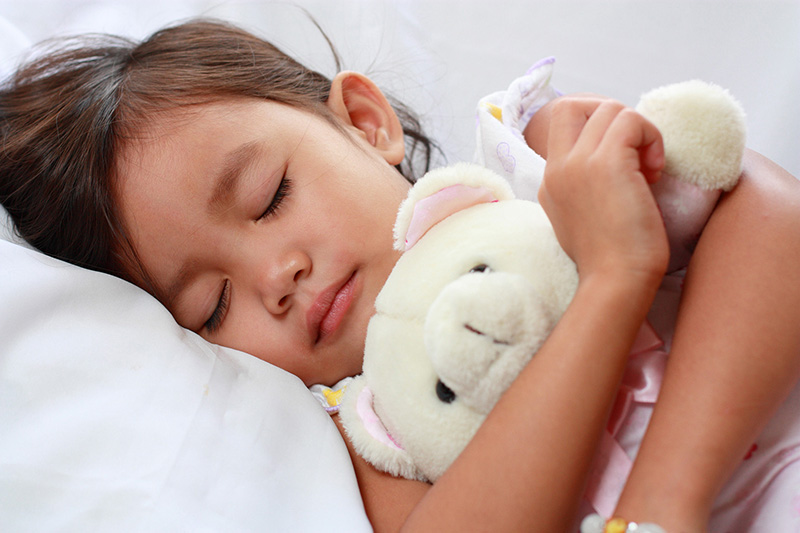Families For Life | Good Sleep Habits for Children with Autism Spectrum Disorder

DID YOU KNOW?
Many children and teenagers with autism spectrum disorder (ASD) stim and might keep stimming throughout their lives. They use stimming to manipulate their environment to produce stimulation, or because they have trouble with imagination and creativity and can’t think of other things to do, like pretend play.
READ MORE

Children with autism spectrum disorder (ASD) need as much sleep as other children. But they can sometimes have trouble with healthy sleep habits. Here are some ideas to help your child with ASD settle and sleep better.
About sleep habits and routines
Habits and routines that promote sleep help all children – with or without autism spectrum disorder (ASD) – feel sleepy and ready for bed at the right time. The right time is a time that’s appropriate for a child’s age and sleep needs.
Before focusing on ASD-related sleep issues, it’s important to:
understand your child’s sleep patterns and how much sleep your child needs
focus on some basic tips for promoting healthy sleep habits.
Then you can improve your child’s sleep by working on:
regular sleep cycles
positive bedtime routines
appropriate bedtimes
Find out more about sleep needs for different ages in our articles on baby sleep and toddler sleep.
Regular sleep cycles for children with autism spectrum disorder
Children with ASD can find it more difficult than other children to get into and keep to a regular pattern of sleeping and waking. This is called a ‘sleep cycle’.
This is partly because regular sleep cycles are influenced by daily routines, and children with ASD sometimes have trouble understanding and following routines. They might be attached to their own unusual routines and rituals and have trouble with fitting into regular family routines. Or their communication difficulties might make it hard for them to pick up on cues that it’s nearly bedtime.
You might be able to improve your child’s sleep cycle by working on your child’s understanding of routines in general.
Read tips on routines for children with disability and changing routines with children with ASD.
Positive bedtime routines for children with autism spectrum disorder
Here are some ideas that might help you establish a positive bedtime routine for your child with ASD:
Use a visual schedule with pictures showing the bedtime routine, so your child understands the steps – for example, put on pajamas, clean teeth, go to the toilet, get into bed, turn out light.
Put stickers on the schedule to show when your child completes a step correctly.
Praise your child for successfully completing steps in the routine. As your child gets better at following the bedtime routine, you can phase out praise for specific steps in the routine.
If your child gets fixated on a routine or an object he associates with bedtime, try to vary routines from night to night – for example, use different coloured toothbrushes on different nights. Or you could gradually introduce other objects, like soft toys or different pairs of pajamas.
Appropriate bedtimes for children with autism spectrum disorder
An appropriate and regular bedtime is an important part of a child’s sleep cycle and bedtime routine. Although sticking to an appropriate bedtime might sometimes be hard for your child with ASD, there are things you can do to help.
Work out the best time for your child to go to bed
You can do this by looking at when your child is usually alert or sleepy, and how much sleep your child needs to be well and alert during the day.
For example, you might notice your child generally needs 11 hours sleep. You also know you won’t make it to school on time unless your child is up by 7 am. This means that 8 pm is the ideal bedtime for your child. Your evening activities – dinner time, pre-bedtime and bedtime routines – need to take this ideal bedtime into account.
Give your child clear cues when it’s nearly bedtime
For example, half an hour before bedtime, start some quiet activities like reading or drawing in the family room. Fifteen minutes before, get your child to clean her teeth and go to the toilet. And then it’s time for her to get into bed.
Move your child’s sleepy time towards the set bedtime
Sometimes children aren’t sleepy at an appropriate bedtime. This means that you might need to start moving your child’s sleepy time towards the bedtime you’ve set.
To do this, start giving your child bedtime cues 5-10 minutes earlier every couple of days. It might take a few weeks, but your child should start to feel sleepy earlier and you should be able gradually to match the set bedtime with your child’s sleepy time.
If there’s little or no improvement in your child’s sleeping habits after a few weeks of trying these suggestions, you might need to try something else. There are more strategies in our article on dealing with sleep difficulties in children with ASD.
© raisingchildren.net.au, translated and adapted with permission
Explore more